
Light-Science & Applications
Scope & Guideline
Pioneering Discoveries in Atomic and Molecular Physics
Introduction
Aims and Scopes
- Photonics and Optoelectronics:
The journal covers a broad range of topics in photonics, including the development of new photonic devices, integrated photonics, and optoelectronic materials and systems. - Nanophotonics and Metamaterials:
Research in this area includes the study and application of nanostructured materials that manipulate light at the nanoscale, such as metamaterials and plasmonics, enabling novel functionalities. - Light-Matter Interaction:
Exploration of fundamental and applied aspects of light-matter interactions, including quantum optics, nonlinear optics, and the dynamics of excitons and photons in various materials. - Biomedical Applications:
The journal emphasizes research that applies light-based technologies for medical diagnostics, imaging, and therapy, including photonic biosensors and photoacoustic imaging. - Renewable Energy and Environmental Applications:
Research related to the use of light for energy harvesting, such as solar cells and photodetectors, as well as applications in environmental monitoring and sustainability. - Artificial Intelligence and Machine Learning in Photonics:
The integration of AI and machine learning techniques in optical systems and imaging to enhance performance and capabilities.
Trending and Emerging
- Quantum Photonics and Quantum Computing:
Research on quantum light sources, quantum communication, and quantum optics is gaining momentum, showcasing the importance of quantum technologies in future photonic applications. - Integrated and Miniaturized Photonic Devices:
There is a significant focus on the development of compact, integrated photonic devices that combine multiple functionalities into a single chip, enhancing performance and miniaturization. - Smart and Adaptive Optical Systems:
Emerging research in smart optics and adaptive systems, including tunable metasurfaces and dynamic optical elements, is becoming increasingly relevant for applications in telecommunications and imaging. - Biophotonics and Healthcare Innovations:
An increasing number of studies are directed towards biophotonics, particularly in the context of medical diagnostics and therapies, highlighting the intersection of light science with healthcare. - Machine Learning Applications in Photonics:
The integration of machine learning and AI in optical systems for data analysis, image reconstruction, and optimization is a rapidly growing area of research, indicating a trend towards data-driven approaches. - Sustainable Photonic Technologies:
Research focusing on environmentally friendly and sustainable photonic technologies, such as perovskite solar cells and green photonic materials, is on the rise, reflecting global sustainability goals.
Declining or Waning
- Traditional Solid-State Lasers:
Research on conventional solid-state laser technologies seems to be declining in favor of more advanced laser systems, such as fiber lasers or semiconductor lasers, which offer better performance and versatility. - Basic Optical Materials Research:
Studies focused solely on the fundamental properties of optical materials without direct applications are becoming less frequent, indicating a shift towards more application-driven research. - Classical Imaging Techniques:
The prevalence of classical optical imaging techniques is decreasing as advanced imaging modalities, such as super-resolution microscopy and AI-enhanced imaging, gain more attention and relevance. - Conventional Light Sources:
There appears to be a waning interest in traditional light sources, such as incandescent bulbs and fluorescent lights, as research pivots towards LED technology and other energy-efficient lighting solutions.
Similar Journals
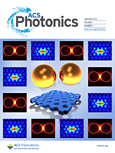
ACS Photonics
Shaping the Future of Photonic DiscoveriesACS Photonics, published by the American Chemical Society, is a leading journal dedicated to advancing the interdisciplinary fields of photonics and optics. Since its inception in 2014, the journal has swiftly established itself as a premier platform for the dissemination of groundbreaking research, achieving a distinguished Q1 ranking across several categories including Atomic and Molecular Physics, Biotechnology, Electrical and Electronic Engineering, and Electronic, Optical and Magnetic Materials. With an impressive Scopus Rank and notable percentiles—ranking 19th in Atomic and Molecular Physics and 32nd in Biotechnology—the journal continues to shape the dialogue surrounding innovations in laser technology, optical materials, and biophotonic applications. While the journal does not currently offer open access options, it remains a vital resource for researchers, professionals, and students seeking to explore the cutting-edge developments in this dynamic field. Located in Washington, DC, ACS Photonics is committed to bridging theoretical insights with practical applications, making significant contributions to science and technology.

Chinese Optics
Bridging Theory and Practice in Optics Innovation.Chinese Optics is a premier journal dedicated to advancing the field of optics, encompassing research on atomic and molecular physics. Published by the esteemed Changchun Institute of Optics Fine Mechanics & Physics in China, this journal supports the sharing of cutting-edge findings since its inception in 2010. With an ISSN of 2097-1842, it operates within a competitive landscape, currently positioned in Q3 of the category for Atomic and Molecular Physics and Optics, according to the 2023 metrics. While the journal is not open access, it offers a valuable platform for researchers, professionals, and students to explore and contribute to significant discoveries in the realm of optics and light technology. By fostering scholarly communication, Chinese Optics plays a crucial role in bridging theoretical and practical aspects, making it an indispensable resource for those passionate about the optical sciences.
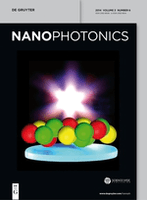
Nanophotonics
Illuminating the Future of Light ManipulationNanophotonics, published by WALTER DE GRUYTER GMBH, is a premier open access journal dedicated to advancing the field of nanophotonics, encompassing cutting-edge research in atomic and molecular physics, optics, biotechnology, and electronic engineering. With a significant impact factor and a notable presence in the top quartile rankings (Q1) across multiple categories, including electrical and electronic engineering, this journal serves as a critical resource for researchers and professionals aiming to explore the latest developments in the manipulation of light at the nanoscale. Since its inception in 2012, Nanophotonics has been an influential platform for disseminating innovative ideas and breakthroughs, offering unrestricted access to its content, thus fostering a collaborative environment conducive to scientific discovery. Located in Berlin, Germany, and with a commitment to promoting the highest standard of scholarly excellence, Nanophotonics continues to shape the future of optical materials and technology, inviting contributions from both established experts and emerging scholars.
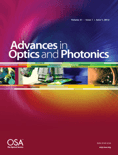
Advances in Optics and Photonics
Illuminating the Future of Light-Based ResearchAdvances in Optics and Photonics, published by the Optica Publishing Group, stands at the forefront of research dissemination in the fields of Atomic and Molecular Physics and Optics, alongside its prominence in Water Science and Technology. With an impressive Q1 ranking in both categories and a Scopus rank of #2/224, this journal boasts a 99th percentile status, underscoring its significance in the academic community. As a beacon of knowledge since its inception in 2009, the journal is dedicated to featuring cutting-edge research, innovative methodologies, and transformative applications in optics and photonics that can drive advancements across diverse scientific domains. While not an open-access journal, it provides vital insights for researchers, professionals, and students eager to stay updated on emerging trends and breakthroughs. With a convergence period extending to 2024, Advances in Optics and Photonics is positioned as an essential resource for anyone looking to explore the evolving landscape of light-based technologies.
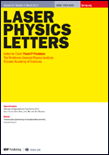
LASER PHYSICS LETTERS
Elevating the Standards of Laser ResearchLASER PHYSICS LETTERS is a prestigious peer-reviewed journal published by IOP Publishing Ltd in the United Kingdom, focusing on the burgeoning field of laser physics and its applications. With an ISSN of 1612-2011 and an E-ISSN of 1612-202X, this journal stands at the intersection of innovative research and practical applications, addressing diverse topics within the realms of Instrumentation and Physics and Astronomy. Recognized for its impactful contributions, it boasts a ranking within the Q3 quartile for both relevant categories as of 2023, reflecting its steady rise and commitment to advancing knowledge in the area. Researchers and practitioners are encouraged to explore its content and contribute to the ongoing discourse that shapes the future of laser technologies. While LASER PHYSICS LETTERS does not currently offer open access options, its rigorous selection criteria ensure that published work is of the highest quality, positioning it as a vital resource for anyone engaged in laser science and engineering.

OPTICA APPLICATA
Pioneering Insights in Atomic and Molecular ResearchOPTICA APPLICATA, published by Wroclaw University of Science and Technology, is a crucial platform for advancing knowledge in the fields of Atomic and Molecular Physics and Optics. With an ISSN of 0078-5466 and an E-ISSN of 1899-7015, this journal serves as a vital resource for researchers, professionals, and students seeking to explore the latest developments and applications in optical science and engineering. Although currently categorized in the fourth quartile in both Atomic and Molecular Physics and Electronic, Optical and Magnetic Materials, its commitment to publishing high-quality research articles, reviews, and technical notes remains unwavering. The journal covers diverse topics from practical applications to theoretical insights and fosters a collaborative environment for global contributors. While it does not offer an open access option, the journal is accessible through university libraries and institutional subscriptions. With an eye towards bridging academic research with real-world applications, OPTICA APPLICATA is well-positioned to influence advancements in photonics and materials science through ongoing issues from 1988 to 2024.
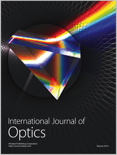
International Journal of Optics
Connecting Science and Application in OpticsWelcome to the International Journal of Optics, a distinguished publication dedicated to advancing the field of optics and its interdisciplinary applications. Published by HINDAWI LTD, this open-access journal has been pivotal in fostering knowledge since its inception in 2009. With a robust focus on atomic and molecular physics as well as electronic, optical, and magnetic materials, the journal has carved its niche within Q3 quartile rankings in these categories for 2023, signifying its growing impact and relevance in the scientific community. Researchers and professionals will find a rich repository of innovative and cutting-edge research articles that not only address fundamental aspects of optics but also explore practical applications across various domains. The journal's aim is to promote high-quality research dissemination, enhancing collaboration among scientists and ensuring that pivotal findings reach a global audience. Join us in exploring the dynamic world of optics—where your contributions help shape the future of science.

Frontiers of Optoelectronics
Pioneering Research in Electrical and Optical EngineeringFrontiers of Optoelectronics is a prestigious peer-reviewed journal published by HIGHER EDUCATION PRESS, focusing on the rapidly evolving fields of electrical engineering, optical science, and material science. With its inception in 2012 and an impressive impact factor achieved by being ranked Q1 in both Electrical and Electronic Engineering and Electronic, Optical and Magnetic Materials as of 2023, this journal exemplifies excellence in research dissemination. Operating under an Open Access model since 2022, it ensures timely and widespread accessibility to cutting-edge advancements and innovative applications in optoelectronics, making it an essential resource for researchers, professionals, and students alike. The journal is indexed in Scopus, with notable ranking positions—Rank #143/797 in Electrical and Electronic Engineering and Rank #55/284 in Electronic, Optical and Magnetic Materials—highlighting its significant contribution to the academic community. Based in Beijing, China, the journal fosters a global dialogue around key technological trends, ultimately driving further development in the field.

Nonlinear Optics Quantum Optics-Concepts in Modern Optics
Illuminating the Future of Optical ScienceNonlinear Optics Quantum Optics-Concepts in Modern Optics is a specialized journal published by OLD CITY PUBLISHING INC, focusing on the forefront of research in nonlinear optics and quantum optics. With an ISSN of 1543-0537 and an E-ISSN of 1944-8325, this journal serves as a pivotal platform for the dissemination of innovative concepts and findings in modern optics, significant for both theoretical exploration and practical applications. Established in 2003, the journal's scope encompasses critical areas such as atomic and molecular physics, optical materials, and instrumentation, attracting submissions from a diverse range of interdisciplinary fields. While the journal currently maintains a Q4 ranking in several categories, it continues to strive for higher visibility and impact in the academic community. Researchers and students alike will find valuable insights and contributions that foster advancements in optical science and engineering. With an emphasis on rigorous peer-review, Nonlinear Optics Quantum Optics-Concepts in Modern Optics is committed to enhancing the understanding and application of nonlinear optical phenomena in various technological domains.
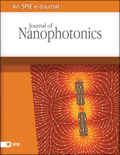
Journal of Nanophotonics
Bridging Science and Technology in NanophotonicsThe Journal of Nanophotonics, published by SPIE-SOC Photo-Optical Instrumentation Engineers, is an esteemed platform dedicated to advancing the field of nanotechnology through pioneering research in photonics. Since its inception in 2007, this journal has become instrumental in disseminating innovative findings and fostering collaborative discussions, especially in the domains of Condensed Matter Physics, Electronic, Optical and Magnetic Materials, and Nanoscience and Nanotechnology. Currently ranked within the Q3 category across these fields, it serves as a vital resource for academics, industry professionals, and students keen on exploring the multifaceted applications and implications of nanophotonic technologies. With its convergence set to continue until 2024, the journal offers a non-open-access model, ensuring rigorous peer-review standards and high-quality publications that contribute to the global body of knowledge.